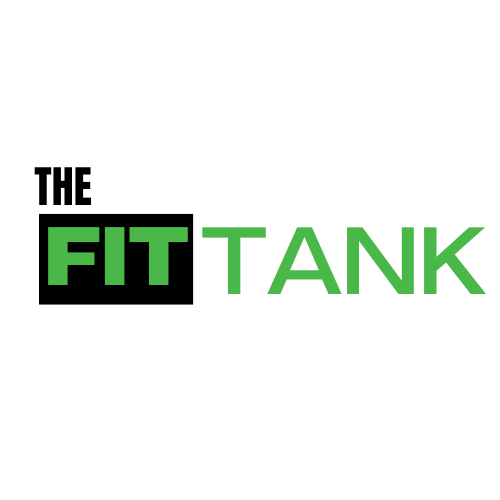Plyometric exercises are explosive movements used for overall fitness and muscle function. They are used by fitness enthusiasts and athletes to exert maximum force in minimal time and help develop the muscles, tendons and ligaments at the same time. And they cause your body to burn more calories in a shorter time than most other forms of exercise, so make a great addition to any weight loss program.
These types of exercises are not used as a base workout, but more to complement other workouts and training or fitness programs. For example, they are used by runners to improve muscle performance, strengthen muscles and ligaments to avoid injury and are used by body builders as a way to challenge fast-twitch muscles and improve fat loss.
Benefits that anyone can enjoy with plyometric exercises include increased agility and coordination and to lower the risk of injury in fitness activities like swimming, volleyball or soccer. Here are some other health benefits:
· Improved muscle speed
· Improved strength
· Injury prevention
· Improved athletic performance
· Improved sports technique
· No equipment necessary except a box (if you choose)
The plyometric exercises below incorporate the whole body. While some fitness advocates claim these should be performed with extreme force and speed, proceed with care. Go through the motions slowly and do five to ten reps of the exercise at your own pace until your body becomes used to the movement. Your speed and force (or explosiveness) will naturally increase with time as your muscles adapt and become stronger.
One way to incorporate plyometrics into your daily routine is to choose a few of the exercises below that you feel will benefit you without injury. For your plyometrics routine, perform one or two sets of each chosen exercise, doing about five to fifteen repetitions of each movement. With only a short break of 30 to 60 seconds, go to the next exercise and so on until you complete a 10-minute workout.
The following are some full body plyometric exercises that anyone can do at home. If you choose to do the exercises with boxes, use a solid box with dimensions of about 20”x24”x30” for athletic training. Use a smaller one if this type of exercise is new to you and you need to build strength or endurance.
Plyometric Exercises You Can do at Home:
Squat Jump
1. Begin in a standing position with feet about 18 to 24 inches apart with arms to your side, elbows bents and palms facing forward at shoulder height
2. Slowly lower yourself into a squat position
3. When your thighs are parallel to the floor, jump upward as high as you can off the floor, as you raise your arms above your head, keeping your palms facing forward (use your toes at the end to push off the ground)
4. Be careful to land evenly on your toes and then lower to your heels as you go back into a squat position and repeat for 5 – 15 reps (you can repeat for up to three sets)
Traditional Burpees
1. Begin in a standing position with feet about 4-6 inches apart
2. Bend your knees and lower yourself to the floor into a low squat, as your upper body moves slightly forward with your hands to the floor
3. With your weight on your hands and straight arms locked, kick both legs back into a plank position keeping your arms strong
4. Quickly bring your legs back into the squat position then “explode jump” up into the air, landing on feet
5. Repeat squat-plank-squat-jump movement for 5 – 15 reps
6. Because this movement involves the shoulder, perform this exercise with care until your muscles, tendons and joints become stronger
Lunge Jump
· Stand in lunge position with right foot forward and both knees bent at 90-degree angles, toes facing forward, arms should be bent at your side as if you are going to run
· Explode jump up from this position using your arms to propel you as you switch legs in midair
· Keep your back straight to help with balance
· Land with left foot forward and repeat movement; aim for 5 – 10 reps for each leg
· Be careful that your knees don’t bend too much and never extend your knee past your toe
Sideways Ski Jump
1. Begin in a standing position with feet about 5 inches apart and arms to your side with elbows bent and hands in front of you (as if you are holding ski poles)
2. Bend your knees as if you are speed skiing; in a squatting position with your thighs parallel to the ground (or close)
3. Jump up forcefully and land about 2-3 feet to the side into a squat position
4. Do this back and forth about 10 times and then move on to next exercise.
Jumping Mountain Climbers
1. Begin on the floor in plank position with your body straight, your feet together, and arms strong and straight under your shoulders
2. Staying in plank position, bend your right knee while bringing it to meet your right shoulder (or close to it) then return to plank position and repeat the other side
3. As you perform this exercise with alternating legs, the move should be a “hopping” toe move to keep the momentum
4. Do at least 5 – 10 reps for each leg
Box or Elevated Push Ups
1. This is a standard push-up, but your feet should be elevated about four inches off the ground; a box or other small, stable item can be used for this
2. Keeping your body straight and arms strong and straight, lower your shoulder to the floor and push back up into plank
3. Repeat for 10 reps
Box Jump
1. Stand about six inches from your box, with feet at hip width
2. Bend your knees as you press your buttocks down into squat position
3. Using your arms for momentum, swing them up as you explode jump up onto the box
4. Land on the box, evenly on both feet, as you bend your knees to absorb the impact
5. Once you are solid, explode jump backwards off the box to land on the ground, again using your arms as momentum
6. Do about 10 reps and repeat the set up to three times
These exercises you can do at home, but please consult your physician before any type of strenuous activity.



